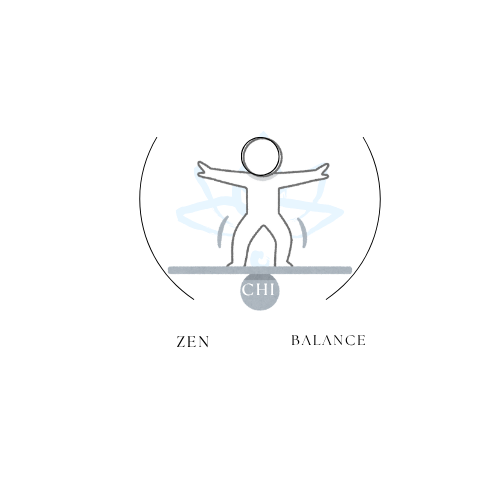
Skills for Stress Relief at Work Commute and Home Life
Share
Updated on: 2025-10-25
Table of contents for stress relief and stress reduction
- Stress relief overview: gentle approaches for stress reduction
- Why stress relief matters in daily routines
- How to use this stress relief guide
- Relaxation techniques for stress relief you can try
- A calm take on breathwork for stress alleviation
- Gentle movement as stress relief
- Sensory grounding for quick stress reduction
- Mindfulness meditation for stress alleviation without pressure
- Mindfulness basics for everyday stress relief
- A brief mindfulness moment for busy schedules
- Myths and facts about stress relief and stress alleviation
- Personal experience with stress relief during a busy day
- Choosing supportive tools for stress relief
- Final thoughts and takeaways on stress relief
- Questions and answers on stress relief
Stress relief overview: gentle approaches for stress reduction
Many people look for stress relief that feels realistic and kind. In daily life, small steps toward stress reduction and stress alleviation can make a noticeable difference. This guide offers practical ideas you can adapt with ease. It does not aim to prescribe or promise outcomes. Instead, it invites you to explore relaxation techniques, mindfulness meditation, and natural stress relief remedies without medication at a pace that feels comfortable.
Why stress relief matters in daily routines
Stress may touch energy, focus, patience, and sleep quality. Gentle, consistent habits can help create steadier days. Short practices are often easier to maintain. Over time, these practices may provide a sense of balance without requiring major changes. If you are wondering, “What are the most effective stress relief techniques?” the most helpful answer is often the one you will actually use and repeat.
How to use this stress relief guide
Consider starting with one small idea. Test it in a low-pressure way for a week. Notice what feels supportive. Keep what works, and kindly set aside what does not. There is no need to rush. Stress relief thrives on consistency more than intensity.
Relaxation techniques for stress relief you can try
Relaxation techniques come in many forms. You might experiment with a few and gently craft your own mix. Below are simple options that are easy to fit into a busy day. They are designed to be approachable and can be adjusted to your comfort level.
A calm take on breathwork for stress alleviation
Breathing practices may support a sense of calm. A soft approach is to slow your exhale a little longer than your inhale. You can try counting a short inhale and a slightly longer exhale, using numbers that feel natural. Keeping shoulders relaxed and jaw soft can add comfort. If you ever feel lightheaded, simply return to your normal breath.
Gentle movement as stress relief
Light stretching, an unhurried walk, or a few mindful shoulder rolls can offer stress relief by shifting attention into the body. If you work at a desk, a short posture reset—feet flat, spine long, gaze soft—can feel refreshing. There is no need for a full workout; even a minute or two can be a pleasant break.
Sensory grounding for quick stress reduction
When the day feels full, you may appreciate a brief grounding check-in. Try noticing five things you can see, four you can touch, three you can hear, two you can smell, and one you can taste. This simple sequence can help your attention settle. If counting feels distracting, you can also choose one sense—like sound—and spend a moment listening without judging.
Mindfulness meditation for stress alleviation without pressure
Mindfulness meditation can be practiced in a short, flexible way. Instead of striving for a blank mind, you can sit or stand comfortably and notice your breath or a stable anchor, such as the sensation of your feet on the floor. When attention wanders, a gentle return is enough. Over time, this approach may feel less like a task and more like a pause that supports stress relief.
Mindfulness basics for everyday stress relief
Mindfulness is about noticing the present moment with curiosity. You might observe thoughts, sensations, or sounds and label them simply: “thinking,” “warmth,” “birdsong.” Labels are optional; they can help you observe without getting pulled in. If you prefer, focus on a single anchor—the breath, a word, or a quiet visual point—and rest attention there for a minute or two.
A brief mindfulness moment for busy schedules
When time is tight and you ask, “How can I get quick stress relief during a busy workday?” try a one-minute pause. Sit comfortably, lower your gaze, and soften your shoulders. Inhale naturally, then exhale slowly. Notice one sense—such as the feeling of air on your skin—for five breaths. This tiny reset fits between calls, after emails, or before meetings.
Myths and facts about stress relief and stress alleviation
- Myth: Stress relief requires long sessions. Fact: Short, consistent moments can be easier to maintain and still feel meaningful.
- Myth: Relaxation techniques must be complex. Fact: Simple actions—like a slow exhale or a brief walk—are often the most approachable.
- Myth: Mindfulness meditation means “no thoughts.” Fact: Thoughts may appear; the gentle return of attention is the practice.
- Myth: There is one best method for everyone. Fact: People vary; the most supportive approach is the one you will use regularly.
- Myth: Natural stress relief remedies without medication work the same for all. Fact: Experiences differ; consider starting small and noticing your response.
- Myth: Stress alleviation happens overnight. Fact: Many people notice benefits gradually with steady, realistic habits.
Personal experience with stress relief during a busy day
A few years ago, I noticed my afternoons felt scattered. I decided to try a two-minute routine after lunch. I would step away from my screen, sip water slowly, and look out a window while taking a few relaxed breaths. At first, it felt too simple to matter. After a couple of weeks, I realized I returned to my tasks with a clearer mind. It did not solve everything, yet it set a calmer tone. This small practice became a dependable part of my stress relief toolkit because it was easy to repeat and kind to my schedule.
Choosing supportive tools for stress relief
Practical items can make calm more accessible. A comfortable cushion, a soft eye mask, or a simple timer can encourage regular breaks. Some people appreciate ambient sounds or a gentle aroma. If you enjoy exploring wellness tools, you might like browsing a curated selection to find a few pieces that feel inviting.
You can explore the All collections for options that complement your routine, visit the Blog for more ideas, reach out via Contact if you have questions, or learn more about the brand at Zen Chi Balance. Choosing one or two supportive tools is often enough to get started.
Final thoughts and takeaways on stress relief
Stress relief can be gentle, flexible, and personal. You do not need a perfect plan to begin. Small actions practiced with care may bring steady stress reduction and stress alleviation over time. If you feel drawn to relaxation techniques or mindfulness meditation, try a short, consistent routine and observe your experience. Many readers looking for the best stress relief techniques for anxiety and burnout discover that a simple daily pause is both approachable and sustainable.
- Start with one small habit and repeat it kindly.
- Prefer simple relaxation techniques you can use anywhere.
- Let mindfulness be about noticing, not perfection.
- Explore natural stress relief remedies without medication with care and curiosity.
- Adjust your routine as your days and needs evolve.
Disclaimer: This article shares general information only and does not offer medical advice. If you have questions about your health, please consider speaking with a qualified professional.
Questions and answers on stress relief
What are the most effective stress relief techniques?
“Effective” can be personal. Many people find value in simple options they can practice often, such as a slow exhale, a short mindful walk, or a one-minute sensory grounding check-in. Gentle movement and brief mindfulness meditation can fit into most days. The techniques you use regularly are more likely to feel supportive over time.
How can I get quick stress relief during a busy workday?
Consider a one-minute routine. Sit comfortably, relax your jaw and shoulders, and take a soft inhale followed by a slightly longer exhale. Notice one sense—like feeling your feet on the floor—for a handful of breaths. You can also stand, stretch lightly, and look at a distant point to rest your eyes. These brief pauses can be inserted between tasks without disrupting your schedule.
Are natural stress relief remedies without medication helpful?
Experiences vary. Some people appreciate gentle options like a warm bath, soothing music, a calming tea aroma, or a tidy space. If you are exploring natural stress relief remedies without medication, it may help to start small and notice how you feel. Your comfort and consistency matter most.

I'm a passionate curator at Zen Chi Balance, dedicated to spreading calm, harmony, and mindful living through faith-inspired lifestyle products. I help craft meaningful experiences for our global community of mindful shoppers.
The content provided is for informational and inspirational purposes only. It is intended to encourage personal growth, mindfulness, and balance in daily life. Zen Chi Balance does not provide medical, legal, or professional advice. For specific concerns or guidance, please consult a qualified professional. Visit us at www.zenchibalance.com for more inspiration and resources.
